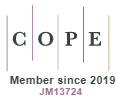Effects of Caustic Recovery on Pollution and Cost of Production in a Cotton Textile Industry
DOI:
https://doi.org/10.15415/jotitt.2014.22010Keywords:
Caustic soda, Chemicals, Costs, recovery, EffluentAbstract
Textile manufacturing industry is uses substantial amount of chemicals not only in the production processes but also in manufacturing the raw materials. Chemicals used in textile production are generally classified as commodity chemicals and speciality chemicals. Former are used in Bulk and the later are used in small quantities. Caustic Soda (Sodium Hydroxide) is one of the major chemicals which are used in large quantities for producing cotton textiles. Caustic soda results in highly alkaline wastewater from the textile mills which makes the effluent toxic and poses difficulty in treatment of effluent. This study to assess the impact of caustic recovery from the mercerization plant was conducted in a cotton fabric manufacturing unit. A pilot-scale single effect evaporator was used to concentrate the effluent stream from mercerization process and the changes in the quality of effluent and concentration of caustic lye were studied over a period of one year. In addition to the improvements in the quality of effluent, the study has also focussed on the cost savings in terms of effluent treatment and production due to reuse of the recovered caustic.
Downloads
References
A .K.A. Rathi and K.B. Bhanujan, October, 2004 “Cleaner Technology Development- Some Practical Steps for Developing Countries” Journal of Environmental Science & Engineering, Vol. 46, No. 4, pp. 257.
Chi-I Tuan, Yi Ling Yeh, Ting-Chien Cheh, Chi-Jen Chen, 2011 “The Optimal Operational Design for a Three Effect Vacuum Evaporator and an Energy Performance Assessment” International Journal of Energy Science, Vol. 1, No. 2, pp. 119
George C. Cushnie Jr. 2009, “Pollution Prevention and Control Technologies for Plating Operations” CIA Resources Inc. USA, pp. 4
Muhammad Ayaz Shaikh, October, 2009 “Environmental Issues related with Textile Sector”, Pakistan Trade Journal, pp. 36.
Report of World Textile Chemicals Industry, December 2008, “Industry Study with Forecasts for 2012 & 2017”, Study #2426, pp. 3 & 4.
Standard Methods for the Examination of Water and Wastewater, 1995, 19th Edition Published Jointly by American Public Health Association, American Water Works Association and Water Environment Federation, Washington DC. pp. 1-24
Textile Exchange Online, March 9, 2009, “Recent Market Trends in the Textile Chemical Industry” pp. 1-2.
Wastewater Sampling. SESD Operating Procedure No. SESDPRO-306-R3, USEPA, February 2013 pp. 14
Water & Wastewater-Methods of Sampling and Analysis, IS-3025-1989 Reaffirmed 2008: HPPWD Schedule of Rates, 2009.
Water and Wastewater Analysis – A Guide Manual by Central Pollution Control Board, Oct 2011.
Downloads
Published
How to Cite
Issue
Section
License
Articles in Journal on Today's Ideas - Tomorrow's Technologies (J. Today’s Ideas - Tomorrow’s Technol.) by Chitkara University Publications are Open Access articles that are published with licensed under a Creative Commons Attribution- CC-BY 4.0 International License. Based on a work at https://jotitt.chitkara.edu.in. This license permits one to use, remix, tweak and reproduction in any medium, even commercially provided one give credit for the original creation.
View Legal Code of the above mentioned license, https://creativecommons.org/licenses/by/4.0/legalcode
View Licence Deed here https://creativecommons.org/licenses/by/4.0/
 |
Journal on Today's Ideas - Tomorrow's Technologies by Chitkara University Publications is licensed under a Creative Commons Attribution 4.0 International License. Based on a work at https://jotitt.chitkara.edu.in |











